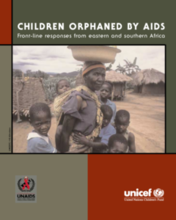Demographic Data
|
Sources: World Bank, UNICEF, UNDP HDR 2015, DHS 2011 |
Displaying 14131 - 14140 of 14348
Regulations on foster care arrangements in Moldova, including the process of recruiting carers, the conditions of placements, and financial measures.
This report includes articles by researchers and practitioners on orphans and vulnerable children in Uganda, Ethiopia, Zambia, Malawi and India. It was prepared for the International AIDS Conference held in Durban in July 2000, and aimed to raise awareness and facilitate effective action for children affected by HIV/AIDS.
Provides a multi-level approach for the analysis and development of context-specific interventions in communities affected by HIV/AIDS epidemic. Includes discussion of microfinance services, and highlights several community-based programs.
The African Charter on the Rights and Welfare of the Child (ACRWC) is an important tool for advancing children’s rights.
This document contains a set of basic principles for foster care. It includes chapters on recruiting, selecting and training caregivers, placing children, evaluating placements, and the functions of social workers.
First published in 1999, this work draws together a multi-national collection of papers, and aims to stimulate the development of policy and practice in this often neglected area.
This chapter from the 'Handbook of attachment: Theory, research, and clinical applications' examines the connection between attachment theory and child care policies.
Presents case studies of interventions aimed at preventing street migration. Some emphasis on methods for identifying high-risk groups.
Outlines strategies for responding to education needs in communities affected by crisis or chronic instability. Includes a summary of UNICEF’s approach, some practical information on implementation, and an identification of areas where more work is needed.
A publication on the global emergency of the AIDS pandemic and the crisis it creates among the children left behind. In an effort to protect vulnerable children, examples of country responses from Botswana, Malawi, Zambia and Zimbabwe are highlighted. Includes recommendations for strategic action.






